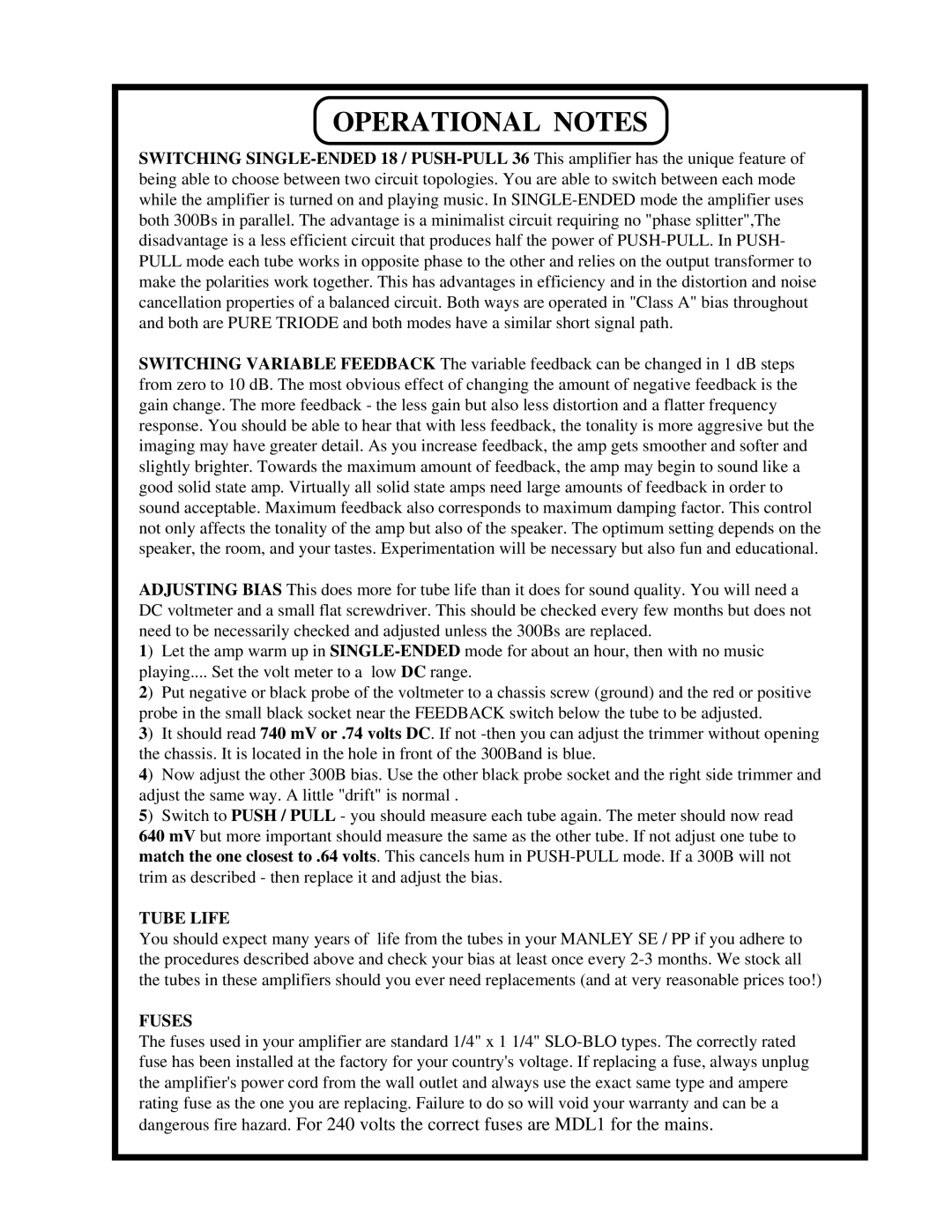SE/PP 300B specifications
Manley Laboratories is renowned for its commitment to high-quality audio engineering, and the SE/PP 300B amplifier exemplifies this dedication. This powerful vacuum tube amplifier is designed for audiophiles who demand the best in sound quality and performance.One of the main features of the SE/PP 300B is its ability to operate in both Single-Ended (SE) and Push-Pull (PP) modes. This versatility allows users to experience the distinctive sonic character of both configurations. Single-ended operation is known for its rich and warm sound, whereas push-pull offers greater power efficiency and reduced distortion. The ability to switch between these modes gives the SE/PP 300B a unique edge, allowing users to tailor their listening experience to their preferences.
The heart of the SE/PP 300B lies in its use of the 300B vacuum tube, famous for its musicality and smooth tonal characteristics. These tubes are celebrated for their warm midrange and natural articulation, making them ideal for a wide range of musical genres. The design of the amplifier ensures that these tubes operate in an optimal manner, contributing to an overall performance that is both dynamic and refined.
Manley's engineering team has incorporated advanced technologies to enhance performance. The SE/PP 300B features a high-quality power supply that minimizes noise and maximizes headroom. This ensures that the amplifier maintains its integrity even at high volume levels. Furthermore, the use of high-grade capacitors and transformers helps achieve a rich soundstage with intricate detail and depth.
Another significant characteristic of this amplifier is its user-friendly design. With straightforward input and output options, as well as easy access to the tube sockets, users can effortlessly service the unit if needed. The aesthetic of the SE/PP 300B is also noteworthy, sporting a classic look that harks back to the golden age of audio while incorporating modern finishing touches.
In conclusion, the Manley Labs SE/PP 300B is a versatile and highly regarded vacuum tube amplifier that marries classic audio traits with contemporary engineering. Its ability to operate in both Single-Ended and Push-Pull modes, combined with the legendary sound of the 300B tubes, positions it as a flagship offering for those who appreciate and seek the highest quality in audio reproduction. Whether for casual listening or serious audiophile pursuits, the SE/PP 300B promises to elevate any audio experience.

